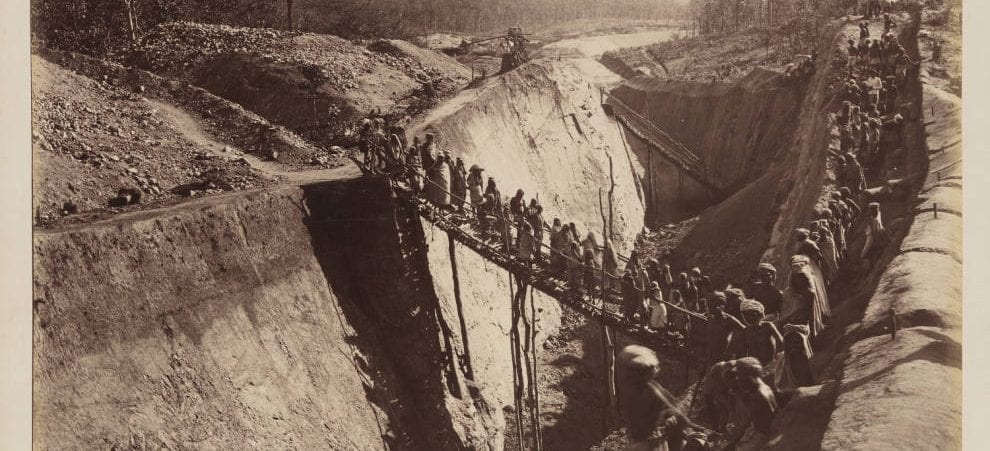Brahmin Women of the Konkan (1855-1862)
Photographer: William Johnson
This photograph by William Johnson displays two Brahmin women standing in the foreground, in front of a large building. The women are dressed in long draping saris. The details of the saris are difficult to detect, however the two women are of Brahmin status, which permits the assumption that they are delicately decorated and made from high quality material. They are adorned with bangles and necklaces along with a bindi each woman wears on her forehead. It is expected that the women are married due to their accessorized jewelry and bindis. The woman on the right of the photograph is standing with her body facing the viewer while her gaze is off to the left. Whereas, the woman on the left is looking to the right, only exposing her profile and slightly covered by a bush. The two women stare off fairly expressionless, which raises the question, “what are they looking at?” In photographs, direct eye contact is an indication of power and a lens into the soul. In Indian culture, it would be inappropriate for a woman to make direct eye contact. In addition, women were not the dominant gender and were not supposed to be portrayed as powerful, therefore these woman politely shift their gaze. As a method to display the women as significant status, they stand elegantly with proper posture.
Mexican Children (1910-1917)
Photographer: Walter H. Horne
Three young girls are portrayed in this photograph taken by Walter H. Horne. The three girls are the main subject of the photograph and stand in front of a weathered brick wall. They are dressed in white tops and long ragged cloths tied around their waists for skirts. Two of the three are holding clay pots and the youngest looking of the three is standing a bit more timid than the others. The three girls might be sisters they have similar features and long dark hair. The tallest girl in the middle is presumably the oldest. She glares into the lens with head tilted downward almost in a sultry manner while the clay pot balances on her shoulder. On the right, the girl holds a bowl leaning against her hip. She stares at the viewer as if she is afraid or possibly confused. The girls standing barefoot on dirty ground and the rips in their cloths suggest that they are low status. This photograph was taken around the time of the Mexican revolution. These girls are probably working to help maintain the home. It is printed on a postcard, which assumes the photograph is meant to be viewed by a large public audience.
Courtesy of DeGolyer Library



